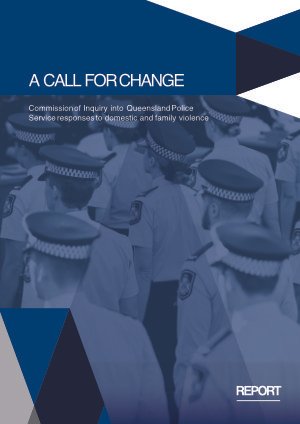By The Commission of Inquiry into Queensland Police Service Responses to domestic and family violence.
The institutional culture of a police force is of vital importance to a community. A police force is numerically strong, politically influential, physically powerful, and armed. It stands at the threshold of the criminal justice system and is in effective control of the enforcement of the criminal law. Each police officer has extensive authority over all other citizens, however powerful, coupled with wide discretions concerning its exercise. Subsequent stages in the criminal justice process, including courts and prisons, are largely dependent on the activities of the Police Force, and will inevitably be affected by its deficiencies, especially any which are cultural and therefore widespread. Investment in cultural change and strong leadership will remove any last vestiges of a culture that does not value women nor understand the costs to us all of allowing domestic and family violence to continue.
The Commission of Inquiry into Queensland Police Service responses to domestic and family violence (the Commission) was established to examine whether there are cultural issues within the QPS that negatively affect police investigations of domestic and family violence. The Commission was also tasked with investigating if any cultural issues identified contribute to the overrepresentation of First Nations peoples in the criminal justice system. It was also required to consider the adequacy of the current conduct and complaint handling process against officers. This companion report is a compilation of case studies, perspectives and experiences shared with the Commission by victim-survivors, police, and other persons. The information is intended to be a snapshot of the evidence gathered from hundreds of submissions and comments provided to the Commission. The stories and case studies about victim-survivors’ experiences have been taken from submissions from victim-survivors’ and organisation and the free text answers from the victim-survivor survey conducted by the Commission. The survey was answered by 848 people. Information and case studies from or about police members, have been taken from 365 submissions, 53 interviews of current and retired QPS members by Mark Ainsworth, free text answers from the QPS DFV-Q survey 2022 (completed by 2,733 members) and a sample of the approximately 6,200 free text responses to the Working for Qld Survey 2021. Case studies were primarily taken from police material provided under notice to produce documents. The views expressed do not profess to be the views held by all members of the QPS. They are instead a representative sample of the evidence the Commission has drawn its conclusions from. This report is intended to be read alongside A call for change (2022), which outlines the Commission’s findings and recommendations. Where names have been used, these are pseudonyms to provide anonymity. Any other identifying details have also been removed to protect the confidentiality of the people involved. Many of the extracts in this report come from submissions that were provided to the Commission on a confidential basis. In each case consent to publish the submission has been obtained from the author. To the extent possible, the Commission has sought to accurately represent the diverse views and experiences that have been shared. The Commission does not necessarily endorse or support the views outlined within this report.
Brisbane: The Commission, 2022. 56p.





















